Looking for your perfect Nepal trekking adventure? With so many stunning trails to choose from, finding the right region can feel overwhelming. This guide helps both first-time trekkers and experienced mountaineers match their skills and interests with Nepal's incredible trekking regions. We'll break down the unique features of the Everest, Annapurna, and Langtang regions, compare difficulty levels across different areas, and share the best seasons to visit each destination. Discover which Himalayan paradise fits your adventure style with insider tips from Luxury Holidays Nepal.
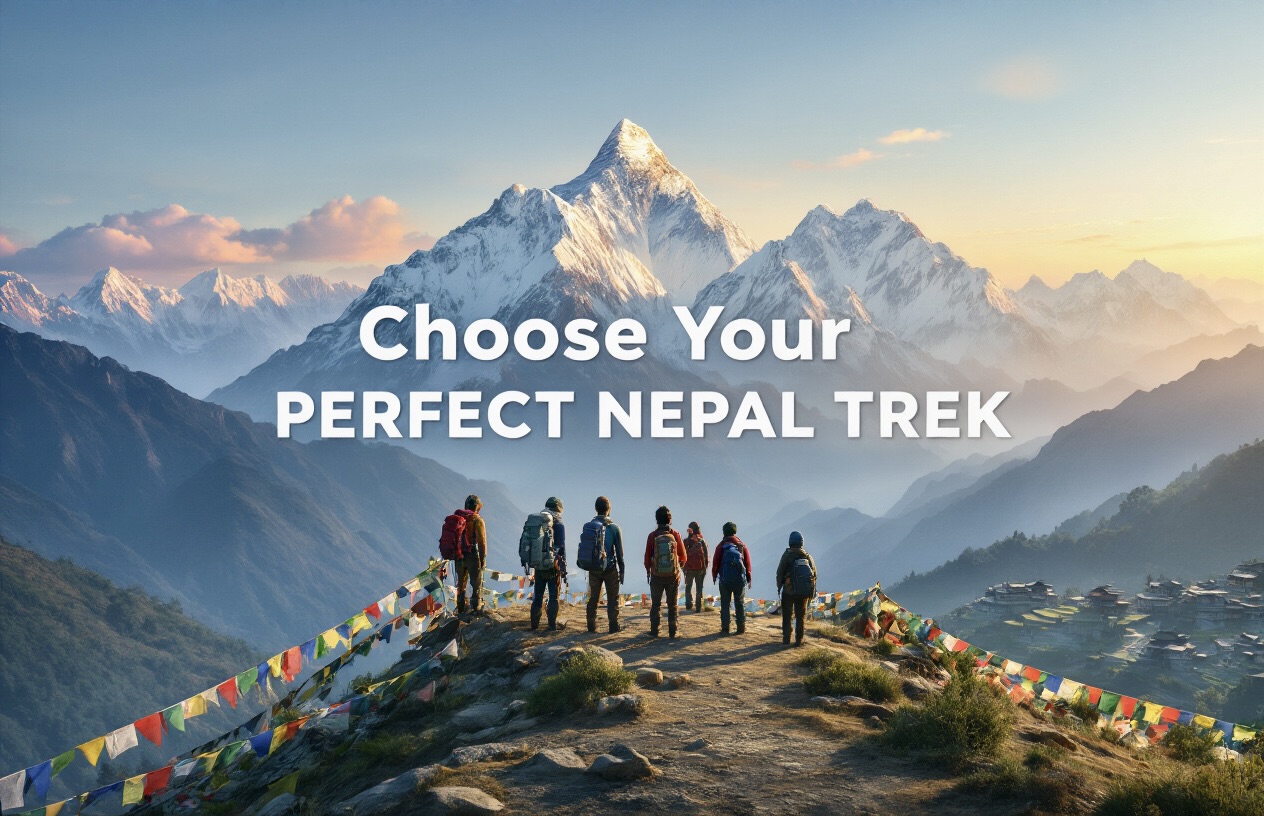
Understanding Nepal's Major Trekking Regions
Everest Region - Home to the world's highest peaks
The Khumbu Region, as it's also known, is Nepal's most famous and developed trekking destination. Dominated by the mighty Mount Everest, this UNESCO World Heritage Site attracts thousands of travelers each year who come to witness the world's highest mountain up close. Beyond Everest itself, the region offers diverse trekking routes, welcoming Sherpa communities, and the fascinating Sherpa capital at Namche Bazaar.
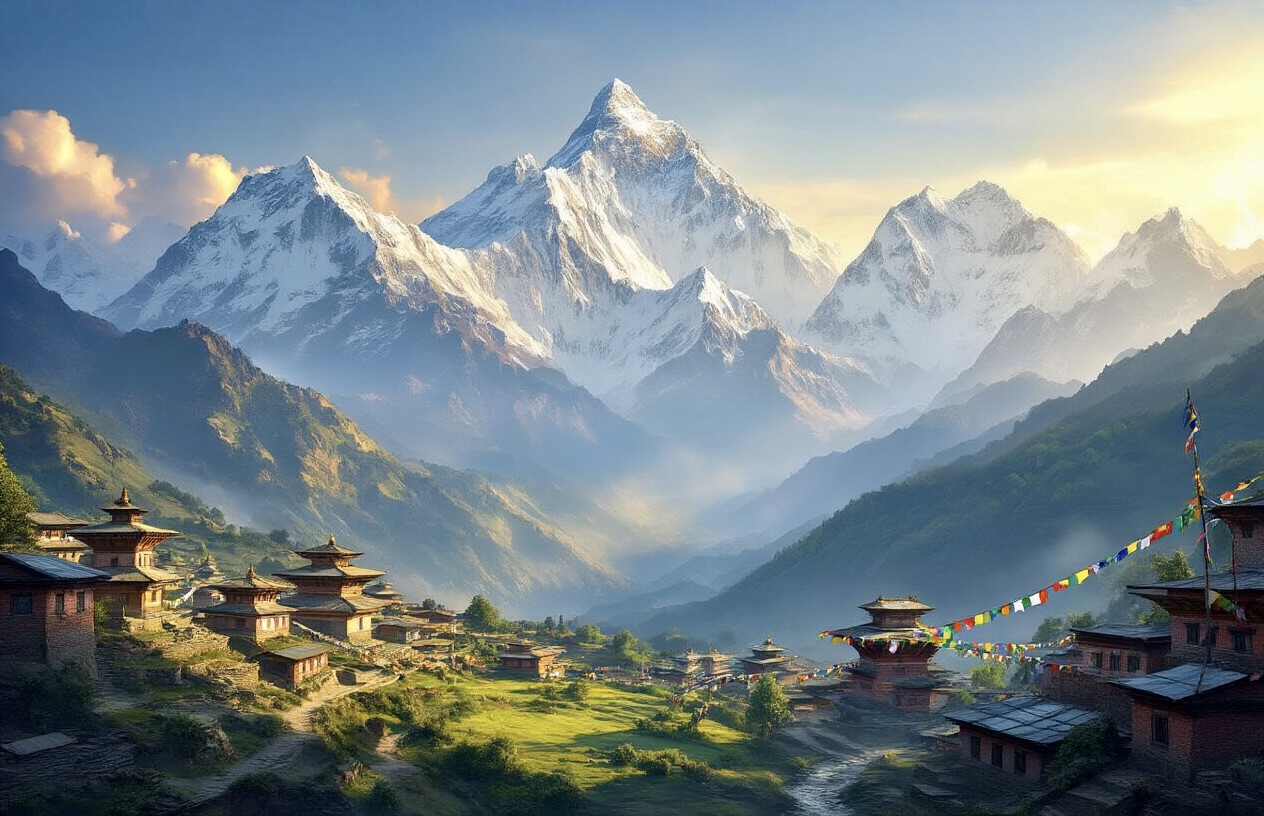
We've found that the infrastructure here is excellent, with well-maintained trails and some of Nepal's best tea houses offering comfortable beds, hot showers, WiFi, and varied food options. Most adventures in this region begin with a short 30-minute flight from Kathmandu to Lukla, the gateway to this breathtaking landscape.
Annapurna Region - Most popular and accessible trekking area
As Nepal's second most famous trekking destination, the Annapurna Region lies in the Central Himalayan range near the lakeside city of Pokhara. We consider this area to be incredibly versatile, offering a wide range of adventures from gentle 3-4 day treks through welcoming foothills communities to the challenging 230km Annapurna Circuit.
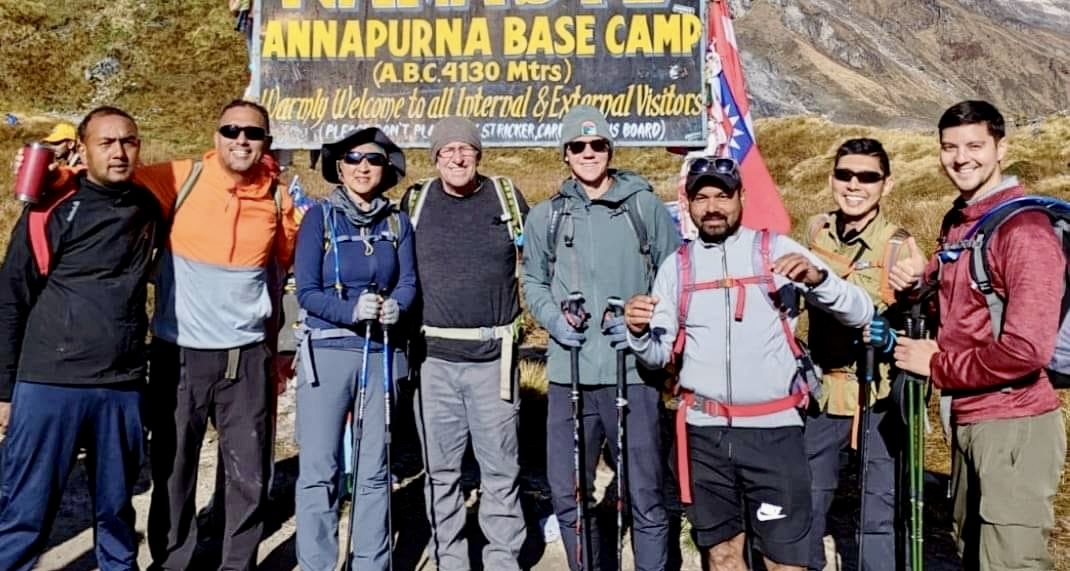
The region is home to some of the country's highest and most famous peaks, including the imposing Annapurna Massif. With most trailheads easily accessible from Pokhara and excellent trekking infrastructure in place, it's no wonder the Annapurna Region is so popular with outdoor enthusiasts of all abilities.
Langtang Region - Close to Kathmandu with diverse landscapes
We believe the Langtang Region offers something special despite lacking the famous peaks of Everest or Annapurna. This area sits at a slightly lower altitude, making it one of Nepal's more accessible trekking regions and allowing visitors to get closer to the mountains themselves.
What makes Langtang truly stand out is the combination of stunning Himalayan landscapes and rich cultural experiences that inspire deep reflection. The region's wilderness allows trekkers to slow down, disconnect from technology, and immerse themselves in nature's serene beauty. The trek typically begins with a scenic drive from Kathmandu to Syabrubeshi, passing through picturesque terraced fields and charming villages before entering the lush valley scenery of Langtang National Park.
Manaslu Region - Remote and less crowded wilderness experience
Located between Kathmandu and Pokhara, the Manaslu Region is home to the world's 8th-highest mountain, Manaslu. We've noticed this area offers a quieter, more remote experience compared to Everest or Annapurna while featuring equally spectacular scenery.
The trekking infrastructure here is continuously improving, with accommodations consisting of a mix of camping and simple tea houses. What makes this region special is the feeling of solitude and being alone in the mountains - something increasingly rare in Nepal's more popular trekking areas. The trails can be accessed from Soti Khola, approximately a 7-hour drive from Kathmandu, making it less accessible but rewarding for those seeking a true wilderness experience away from the crowds.
Everest Region Trekking Experience
Everest Base Camp Trek - Ultimate bucket list adventure
The Everest Base Camp Trek stands as the quintessential Himalayan adventure and a dream destination for trekkers worldwide. We take you on a journey to the foot of the world's highest mountain, standing tall at 8,848.86 meters. This iconic trek typically spans 12-15 days, beginning with a scenic flight to Lukla and following the traditional route through famous Sherpa villages like Namche Bazaar.
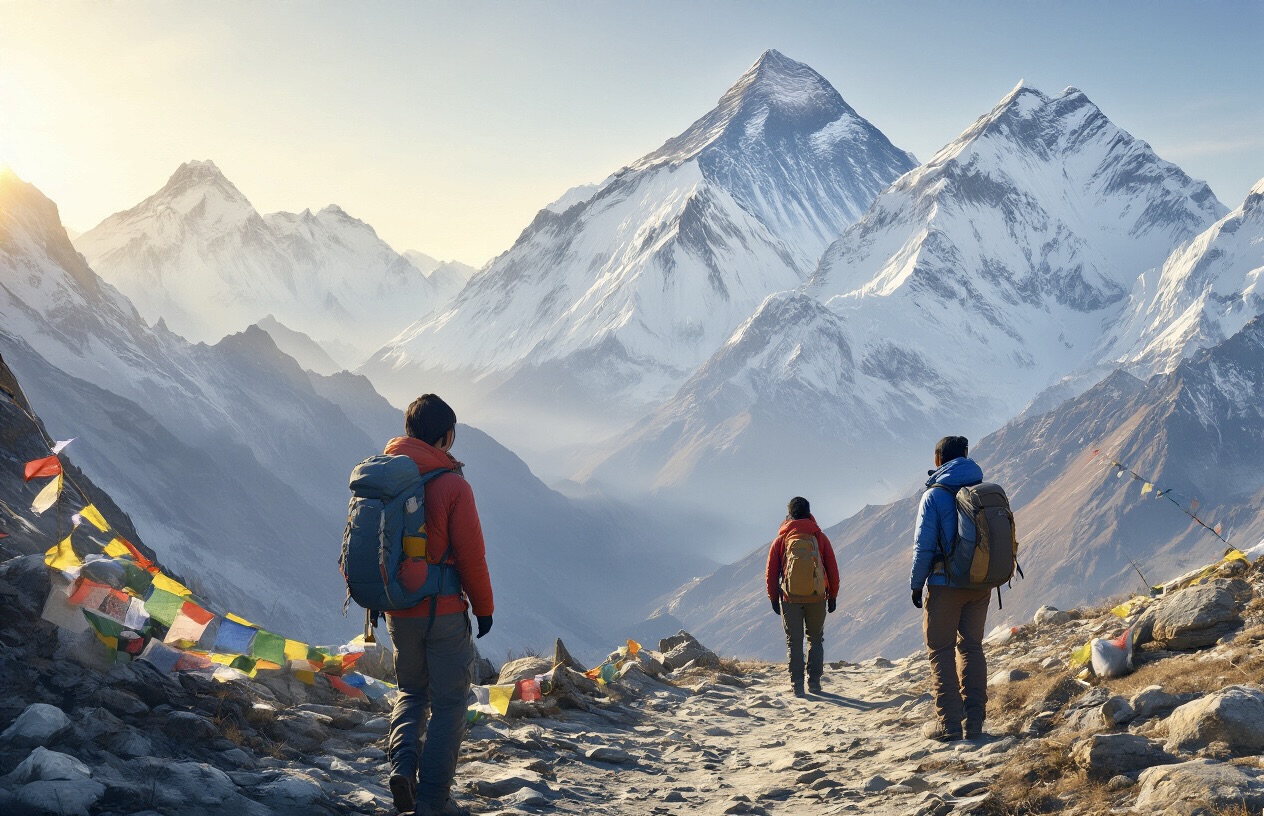
Along the trail, we ensure plenty of time for acclimatization to prevent altitude sickness as you gradually ascend to 5,364 meters. The journey offers spectacular views of not just Mount Everest but also other majestic peaks, including Lhotse, Nuptse, and the beautifully shaped Ama Dablam.
When we reach Everest Base Camp, you'll experience a profound sense of achievement while gazing up at the highest peak in the world. For the most breathtaking panoramic views, we'll ascend Kala Patthar (5,643 meters), where the sunrise and sunset vistas of Everest are truly unforgettable.
Gokyo Lakes Trek - Stunning turquoise alpine lakes
For those seeking a less crowded alternative to the main Everest Base Camp route, we recommend the Gokyo Lakes Trek. This extraordinary journey takes you through the quieter Gokyo Valley, known for its pristine turquoise alpine lakes – a spectacular natural phenomenon in the high Himalayas.
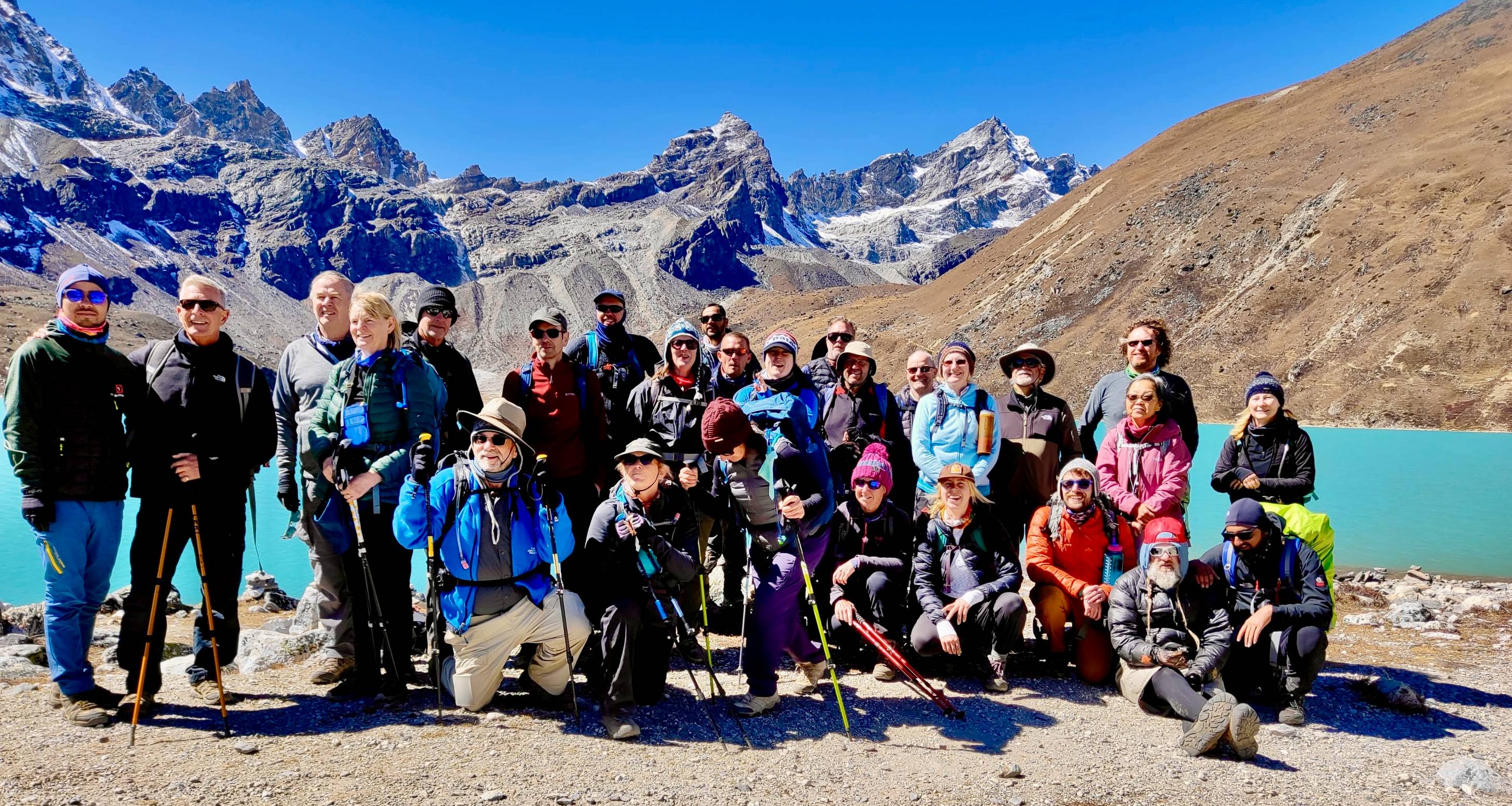
We guide you to a series of six emerald lakes nestled amidst towering peaks, creating one of the most picturesque landscapes in the region. The highlight includes ascending Gokyo Ri (5,357m), which offers some of the best panoramic views of Everest, Cho Oyu, Makalu, and surrounding peaks.
The trek typically takes 14 days, challenging yet immensely rewarding, as you experience serene beauty in a more peaceful setting than the busier Everest Base Camp trail. This route gives us the perfect opportunity to appreciate the unique alpine ecosystem while still enjoying magnificent mountain vistas.
Three Passes Trek - Challenging high-altitude crossing
For more adventurous trekkers seeking a comprehensive Everest region experience, we offer the Three Passes Trek. This challenging expedition crosses three high mountain passes: Kongma La (5,535m), Cho La (5,420m), and Renjo La (5,360m).
This strenuous 19-20 day journey combines the highlights of both the Everest Base Camp and Gokyo Lakes treks while adding the thrill of high-altitude pass crossings. We navigate rugged terrains and glaciers, pushing physical and mental limits as you conquer these challenging passes.
The trek can be done in either clockwise or anticlockwise directions, with the anticlockwise route allowing you to gradually build up to the highest pass. We ensure you experience the breathtaking diversity of landscapes, from deep valleys and glacial moraines to spectacular mountain panoramas that few trekkers get to witness.
Sherpa culture and Buddhist monastery visits
Beyond natural beauty, we immerse you in the rich Sherpa culture that makes the Everest region truly special. Throughout your trek, you'll have unique opportunities to interact with local Sherpa communities known for their mountaineering expertise and warm hospitality.
We include visits to ancient Buddhist monasteries along the route, most notably the Tengboche Monastery – one of the largest and most significant in the region. Here, you can witness Buddhist rituals, observe monks in prayer, and experience the serene spiritual atmosphere that has thrived for centuries in the shadow of the Himalayas.
As we trek through traditional villages, you'll gain insights into the Tibetan-influenced customs and festivals that define Sherpa life. The cultural experience is complemented by staying in teahouses where friendly locals welcome trekkers, offering authentic meals and a glimpse into mountain life. These cultural encounters create memories just as lasting as the mountain views, making the Everest region trek a holistic adventure for mind, body, and spirit.
Annapurna Region Adventures
The Annapurna region is one of the most popular trekking destinations in Nepal, and for good reason. With approximately two-thirds of all trekkers in Nepal visiting this spectacular region, we offer a variety of trails to suit different experience levels and time constraints.
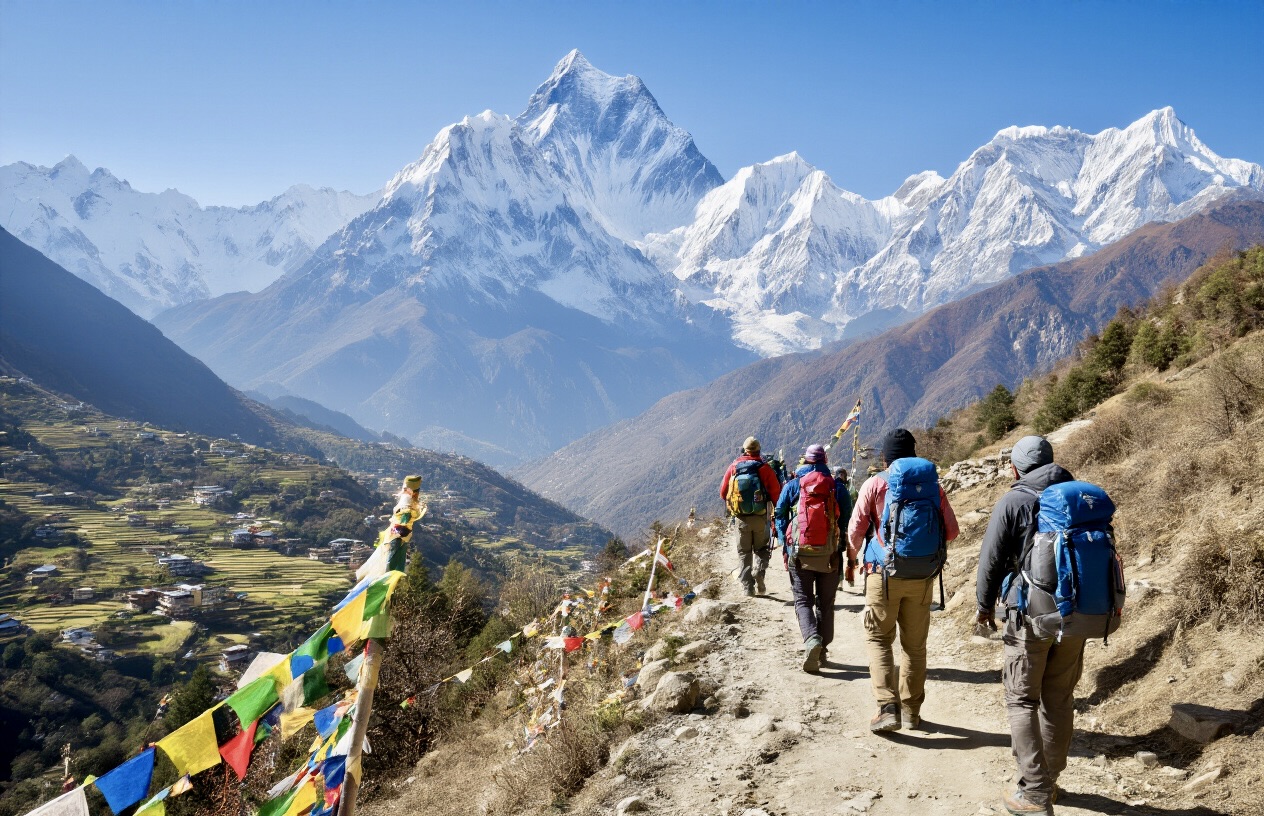
Annapurna Base Camp Trek - Panoramic mountain amphitheater
The Annapurna Base Camp trek, also known as the Annapurna Sanctuary trek, leads to a high glacial basin surrounded by the magnificent Annapurna massif. This 10-13 day journey takes you through stunning landscapes, including rhododendron forests and traditional Gurung settlements.
At 4,130 meters, Annapurna Base Camp offers an incredible 360-degree panorama of towering peaks including Annapurna I (8,091m), Annapurna South, and the distinctive Machapuchhre (Fishtail). This moderately difficult trek typically involves 4-6 hours of walking per day, making it accessible for trekkers seeking a shorter but rewarding Himalayan experience.
Annapurna Circuit Trek - Classic long-distance trail
The legendary Annapurna Circuit is often listed among the world's top 10 treks. This epic journey circles the entire Annapurna massif, covering between 160-230km depending on your chosen route. The complete circuit typically takes 16-19 days, with most trekkers following an anti-clockwise direction to allow for gradual acclimatization.
What makes this trek special is the remarkable diversity of landscapes and climates you'll experience. Starting at 760m in Besisahar, you'll ascend through subtropical lowlands, terraced farmlands, and alpine environments before reaching the challenging Thorong La Pass at 5,416m. From there, you'll descend into the arid Mustang Valley with its otherworldly landscapes before returning to lush greenery.
Along the circuit, you'll enjoy spectacular views of numerous peaks, including Annapurna I-IV, Dhaulagiri (8,167m), and Machapuchhre, while staying in comfortable tea houses each night.
Poon Hill Trek - Perfect for beginners and time-limited trekkers
For those with limited time or looking for a less challenging trek, the Poon Hill-Ghorepani trek is ideal. While still requiring some steep ascents, this 3-5 day journey offers incredible rewards for relatively minimal effort.

The highlight is an early morning climb to the summit of Poon Hill (3,210m) to witness a spectacular sunrise over the Himalayan panorama. From this vantage point, you'll enjoy breathtaking views of Annapurna South, Annapurna Fang, Machapuchhre, Dhaulagiri, and numerous other peaks.
This trek passes through charming Magar villages with their distinctive terraced farmlands and trails shaded by thick forests, providing a perfect introduction to the beauty of the Annapurna region.
Diverse ethnic communities and terraced landscapes
Throughout the Annapurna region, we'll introduce you to the rich cultural tapestry of Nepal. You'll encounter diverse ethnic communities, including the Gurung, Magar, and Tibetan-influenced villages, each with their unique traditions and lifestyles.
The lower elevations feature incredible terraced landscapes where local farmers cultivate rice, millet, and other crops on steep hillsides. As you trek, you'll pass through traditional settlements where you can observe daily life virtually unchanged for generations.
In the higher regions, especially in areas like Lower Mustang (which you can visit on the Annapurna Circuit), you'll discover different landscapes and cultures. These areas lie in the rain shadow of the Himalayas, creating arid, barren landscapes with distinctive architecture and strong Tibetan Buddhist influences.
Whether you choose the full circuit, base camp trek, or shorter Poon Hill option, the Annapurna region offers an unforgettable blend of stunning mountain scenery and cultural immersion.
Langtang Region Opportunities
The Langtang region offers some of Nepal's most accessible and rewarding trekking experiences. Just visible from Kathmandu city center, these trails provide exceptional opportunities for both novice and experienced trekkers seeking beautiful mountain scenery without the crowds found in other popular regions.
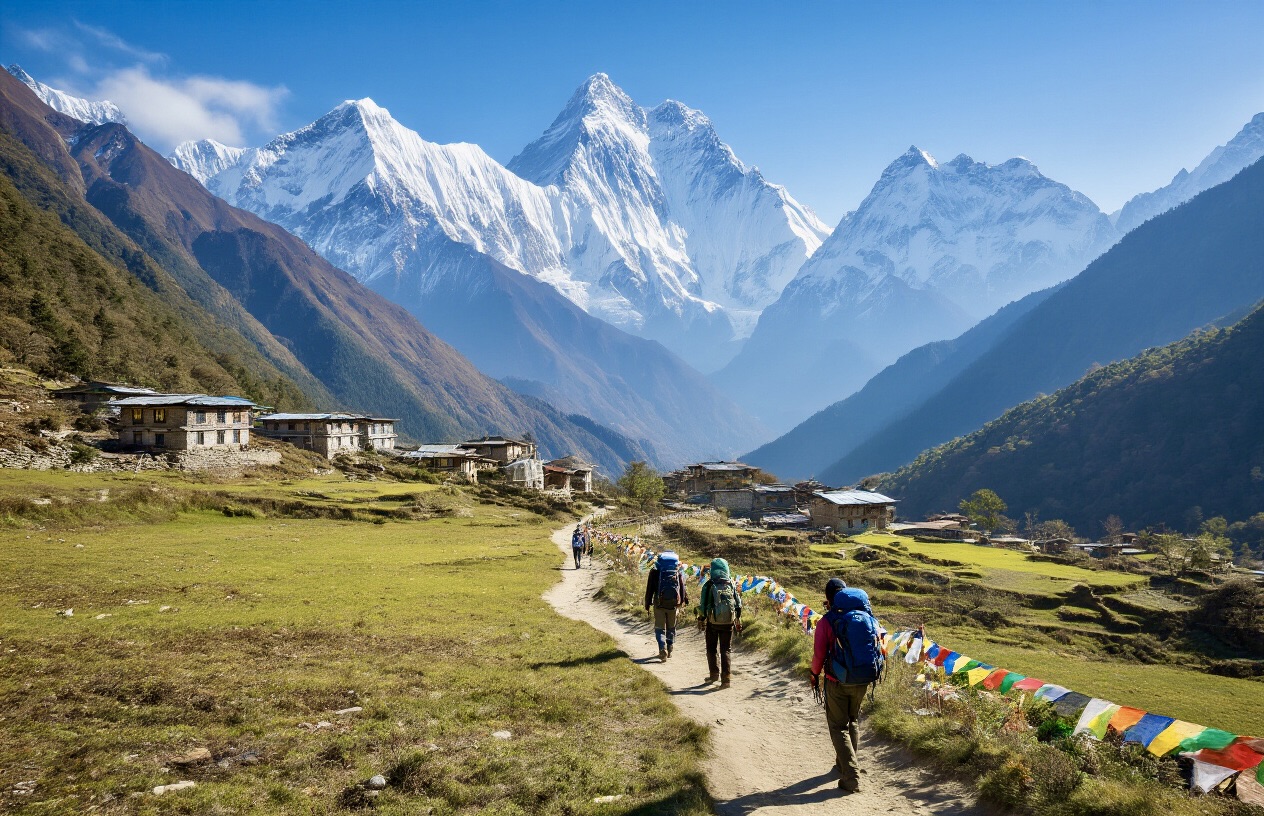
Langtang Valley Trek - Pristine forests and glacier views
The Langtang Valley Trek stands as one of Nepal's classic trekking routes, offering a perfect balance of stunning natural beauty and cultural immersion. This moderate trek follows the Langtang river up a steep and narrow valley, reaching a maximum elevation of 3,860m at Kyanjin Gompa.
As we trek through pristine forests where red pandas inhabit, we'll witness spectacular views of Langtang Lirung (7,246m), Langtang II (6,581m), and the distinctive pyramid-shaped Mt. Gangchempo (6,387m). The valley opens up dramatically near Kyanjin Gompa, providing breathtaking panoramic vistas.
From Kyanjin Gompa, we can enjoy several rewarding day trips:
- Kyanjin Ri viewpoint (4,600m) for sensational panoramic views
- Lirung Valley's glaciers and yak pastures
- Tsergo Ri viewpoint (4,984m) for the more adventurous
- Yala Peak (5,500m) for those seeking a challenging overnight excursion
The standard route takes about 6-8 days, making it perfect for those with limited time in Nepal.
Gosaikunda Lake Trek - Sacred alpine lakes pilgrimage
The Gosaikunda Lake Trek leads to one of Nepal's most sacred high-altitude lakes at 4,380m. This holy site attracts scores of Hindu pilgrims, particularly during the August full moon for the Janai Purnima festival.
The trek features:
- A challenging yet rewarding pilgrimage route
- Crossing the often snowbound Laurebina La pass (4,610m)
- Stunning views of the Langtang and Ganesh mountain ranges
- A series of 108 alpine lakes, with Gosaikunda being the most significant
- Religious importance for both Hindu and Buddhist devotees
This trek can be combined with the Langtang Valley Trek for a more comprehensive experience of the region, usually taking 8-10 days in total.
Helambu Trek - Cultural immersion with Hyolmo people
The Helambu Trek offers a perfect combination of cultural insights and moderate hiking through picturesque villages inhabited by the Hyolmo people. This relatively low-altitude trek (maximum 3,640m) provides:
- Beautiful terraced fields and wild forests
- Colorful flower meadows during spring months
- Opportunities to experience authentic village life
- Excellent winter trekking option when higher routes are snow-covered
- A glimpse into the unique culture and traditions of the Hyolmo people
The standard circuit takes about 7 days, but increasing road access means we can customize shorter options if needed. Many trekkers use Helambu either as a walk-in or exit route to Gosaikunda and the Langtang Valley.
Easy accessibility from Kathmandu
What truly sets the Langtang region apart is its remarkable accessibility. Unlike other major trekking areas in Nepal that require domestic flights or multi-day approaches:
- Langtang trailheads are just a 7-hour drive from Kathmandu
- The Helambu Trek can begin from the northern outskirts of Kathmandu city
- No internal flights are required, making it more affordable and reliable
- Permits are straightforward - just a TIMS card and Langtang National Park entry fee
- Treks can be completed in as little as 5-7 days including travel time from Kathmandu
This accessibility, combined with well-maintained trails and excellent teahouse accommodations, makes the Langtang region ideal for first-time trekkers, families, and those with limited vacation time.
Manaslu Region Wilderness
The Manaslu region offers one of Nepal's most pristine and untouched trekking experiences. Located in the Gorkha district bordering Tibet, this magnificent area showcases the raw beauty of the Himalayas while remaining blissfully uncrowded compared to more popular trekking destinations.
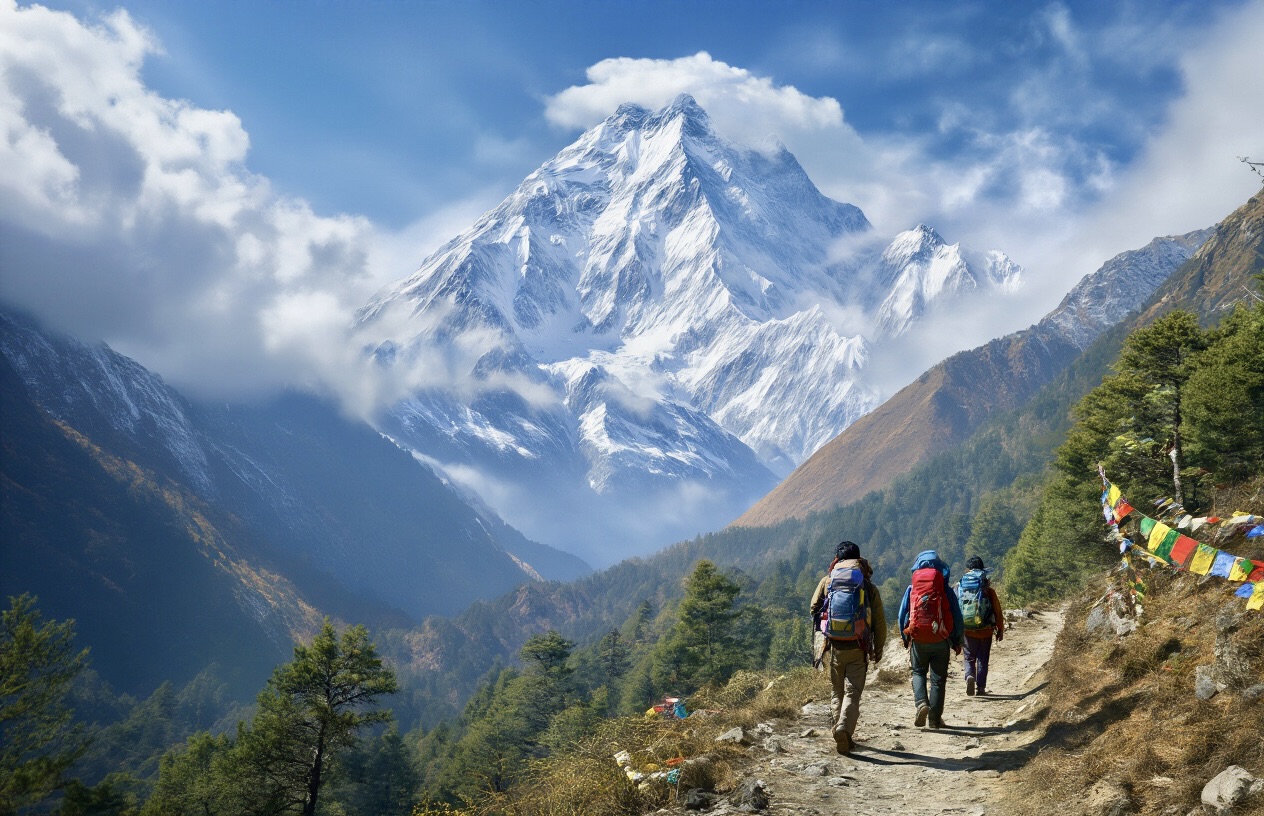
Manaslu Circuit Trek - Off-the-beaten-path adventure
The Manaslu Circuit Trek is a breathtaking 14-15 day Himalayan adventure that circles Mount Manaslu (8,163m), the eighth-highest mountain in the world. Unlike the more commercialized routes of Everest and Annapurna, the Manaslu region remains relatively untouched, offering trekkers a more serene and intimate experience.
This remarkable journey takes you through diverse landscapes ranging from lush subtropical forests and terraced fields at lower elevations to high alpine meadows and glacial valleys as you ascend. The highlight of the trek is crossing the challenging Larkya La Pass (5,106m), which rewards trekkers with panoramic views of Himalayan giants including Manaslu, Himlung Himal (7,126m), Cheo Himal (6,820m), and Annapurna II (7,937m).
Restricted area permits and regulated trekking
The Manaslu region is designated as a restricted area by the Nepalese government, which has helped preserve its pristine environment and authentic culture. To trek here, you'll need special permits that aren't required for many other trekking areas:
- Manaslu Restricted Area Permit: Costs USD 100 for the first seven days and USD 15 for each additional day during peak season (September to November), or USD 75 for the first seven days and USD 10 for each additional day from December to August
- Manaslu Conservation Area Permit (MCAP)
- Annapurna Conservation Area Permit (ACAP), as the trek ends in the Annapurna region
Additionally, trekking in this region requires at least two people in a group accompanied by a licensed guide. This regulation helps ensure safety while trekking in remote areas and contributes to the local economy.
Authentic Tibetan Buddhist culture
One of the most enriching aspects of the Manaslu trek is the opportunity to experience authentic Tibetan Buddhist culture. As you trek higher into the region, particularly in villages like Lho, Sama Gaon, and Samdo, you'll notice a distinct shift from Hindu to Tibetan Buddhist influences.
The trail winds through ancient stone-built villages where time seems to have stood still. You'll encounter traditional mani stone walls carved with Tibetan mantras, colorful prayer flags, and remote monasteries that have preserved centuries-old traditions. Sama Gaon, situated at 3,530m, offers a chance to observe Sherpa women in traditional attire and visit the PungGyen Gompa for insights into Himalayan Sherpa culture.
The villages in the upper Manaslu region maintain strong cultural ties with Tibet, evident in their architecture, customs, and religious practices. This cultural immersion offers trekkers a glimpse into a way of life that has remained largely unchanged for generations.
Dramatic mountain scenery with fewer crowds
Perhaps the most compelling reason to choose the Manaslu region is the combination of spectacular mountain scenery with relative solitude. While you'll encounter other trekkers, the numbers are significantly lower than on popular routes like Everest Base Camp or the Annapurna Circuit.
The trek offers continuous views of soaring Himalayan peaks, including Himal Chuli (7,893m), Ngadi Chuli (7,871m), Shringi Himal (7,187m), and of course, the majestic Manaslu itself. The varied terrain includes dense forests, terraced fields, high alpine meadows, glacial moraines, and thundering rivers crossed by suspension bridges.
During spring, the rhododendron forests burst into a vibrant display of white, pink, and red blooms, adding splashes of color to the already magnificent landscape.
For photographers and nature enthusiasts, the Manaslu region provides endless opportunities to capture pristine mountain vistas without the distraction of crowds.
For those seeking solitude, raw natural beauty, and a deep cultural connection, the Manaslu Circuit offers an experience that is both spiritually enriching and physically rewarding.
Choosing Based on Experience Level
Beginner-friendly options for first-time trekkers
For those new to trekking, we recommend selecting Grade 1 (Easy) treks that anyone can join. These treks feature gentle slopes on well-defined paths with moderate daily walking times of 5-6 hours. The trails aren't too demanding, making them perfect for first-time trekkers, families with young children, or older travelers.
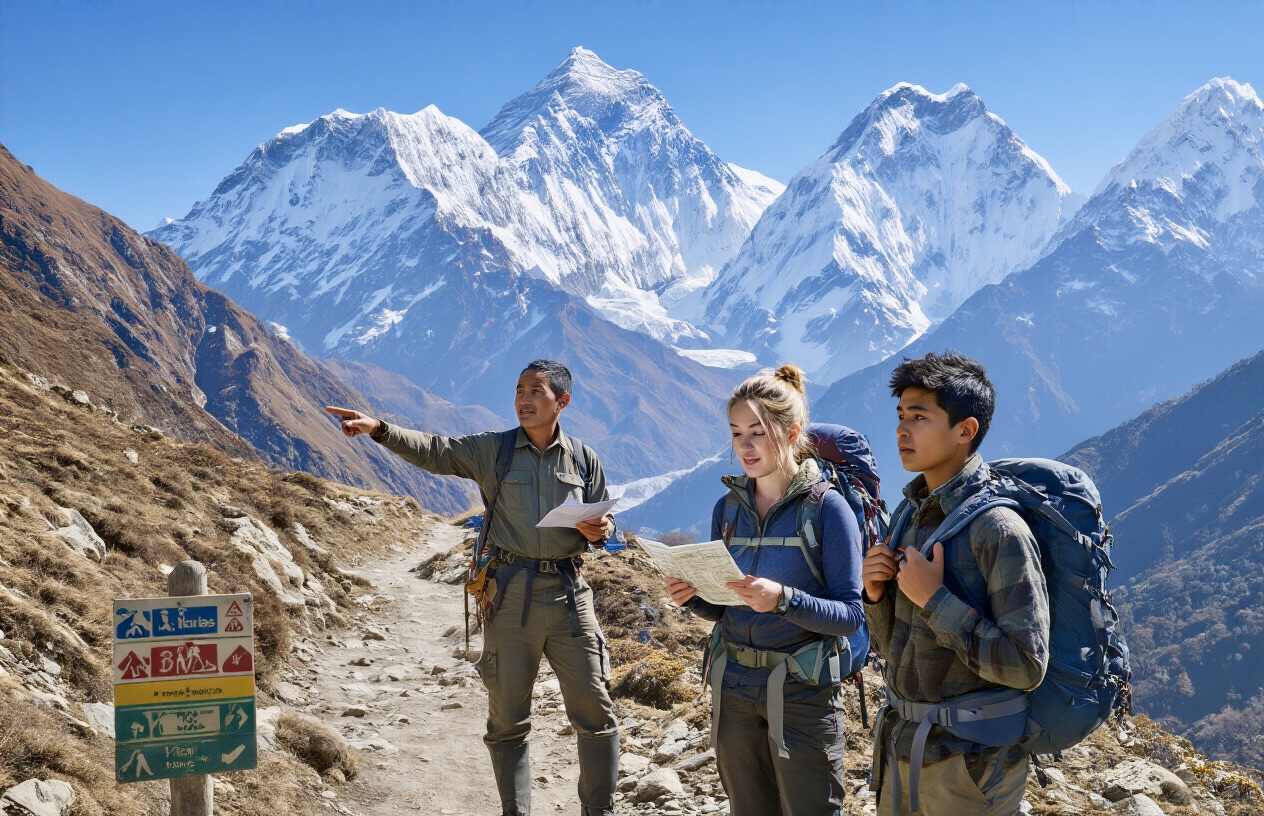
Some excellent beginner options we suggest include:
- Dhampus Hike
- Ghandruk Trekking
- Panchase Trekking
- Nagarkot Hiking
- Royal Trekking
- Ghorepani Poon Hill Trek
These treks typically last 1-5 days and offer spectacular views of the Himalayas while allowing you to experience local culture without the challenges of high altitude or technical terrain.
Intermediate treks for moderate hiking experience
With some trekking experience and reasonable fitness, we recommend Grade 2 (Moderate) or Grade 3 (Moderate to Strenuous) treks. These journeys typically last about 10-20 days and reach elevations between 3,900-4,500 feet. You'll encounter a mix of long and short walks with some steeper sections.
Our recommended intermediate-level treks include:
- Annapurna Base Camp Trekking
- Everest Panorama Trekking
- Langtang Region
- Mardi Himal Trekking
- Khopra Ridge Trek
- Annapurna Panorama (Poon Hill Trek)
These treks may involve extreme weather conditions, lower oxygen levels, and basic accommodations for multiple nights, but the extra effort rewards you with close-up views of gigantic peaks.
Advanced expeditions for experienced mountaineers
For experienced trekkers with excellent physical fitness, we recommend Grade 3 (Strenuous) or Grade 4 (Very Strenuous) treks. These challenging expeditions typically involve crossing high passes, walking for more than 7 hours on many days, and spending multiple nights above 4500m.
Our advanced trek options include:
- Everest Base Camp Trekking
- Everest-Gokyo Lake Trek
- Annapurna Circuit Trekking
- Manaslu Circuit Trekking
- Everest Three Passes Trek
These alpine adventures take you to remote locations with steep slopes and may require walking on snow. You'll need to be well-prepared both physically and mentally, with previous trekking experience strongly recommended.
Technical climbing vs trekking considerations
When deciding between technical climbing and trekking, we consider several key factors:
For Grade 4 (Very Strenuous) or Grade 5 (Challenging) expeditions, you should be prepared for:
- High altitude trekking above 5000m
- Long intervals of uphill climbing
- Steep and rocky trails with potential climbing sections
- Snow walking and extreme weather conditions
- Remote areas with minimal facilities
Some technically demanding treks like Upper Dolpo, Kanchenjunga, Dhaulagiri, and Rolwaling may require:
- Previous mountain experience
- High level of physical fitness and mental toughness
- Specialized equipment (possibly axes and crampons)
- Camping rather than teahouse accommodations
- Walking 8+ hours per day
- Extended duration (20-28 days or more)
We recommend proper training through activities like walking, cycling, or jogging at a consistent pace before attempting any technical climbing expeditions in Nepal.
Seasonal Considerations for Each Region
Spring Season Advantages and Weather Patterns
Spring (March to May) offers one of the best times to trek in Nepal with moderate temperatures and stunning natural beauty. During this season, the weather remains clear and stable in most trekking regions. The temperatures typically range between 15-20°C during the day but can drop to 5-10°C at night in higher elevations.
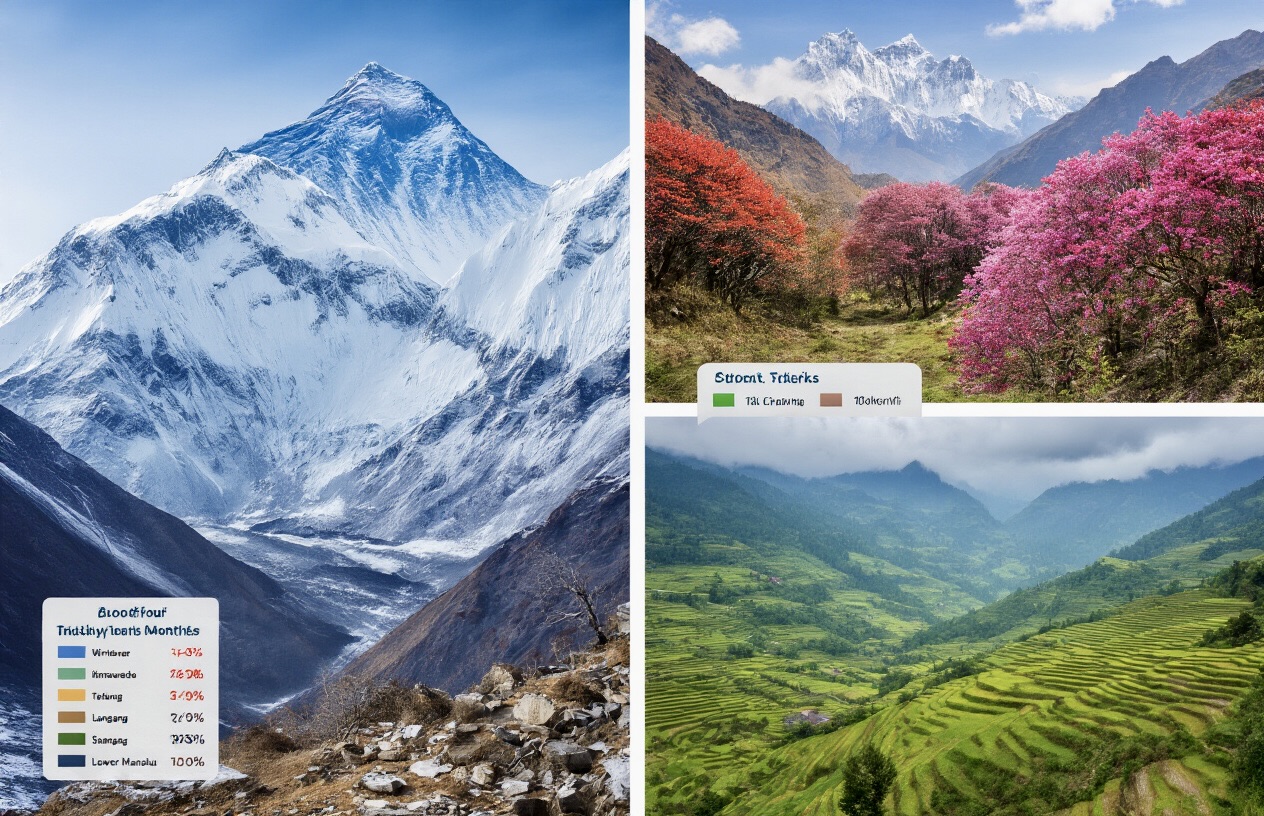
We recommend spring for several key reasons. The rhododendron forests burst into magnificent blooms, creating a spectacular display of colors along many trekking routes, especially in the Annapurna region. Wildlife becomes more active and visible, enhancing your trekking experience. Additionally, spring provides excellent visibility for mountain views after the winter snows have melted but before the monsoon clouds arrive.
However, be aware that popular routes like Everest Base Camp and Annapurna Circuit can get crowded during this peak season. It's advisable to book accommodations and permits well in advance if planning a spring trek.
Autumn Peak Season Benefits and Crowds
Autumn (September to November) is widely considered the prime trekking season in Nepal. After the monsoon rains wash the air clean, this season delivers crystal-clear mountain views with exceptional visibility. The weather is remarkably stable with dry conditions and minimal precipitation across all trekking regions.
We've found that temperatures during autumn are particularly comfortable, ranging from 15-20°C during daytime at lower elevations, while higher altitudes experience cooler temperatures between 5-10°C during the day and can drop below freezing at night.
This season coincides with major Nepali festivals like Dashain and Tihar, offering unique cultural experiences along your trek. However, autumn's perfect conditions make it the busiest trekking season, with crowded trails and teahouses, especially on popular routes. Prices for accommodations and services tend to be at their highest, and advance booking is essential for lodges and flights to trekking regions.
Winter Trekking Possibilities and Limitations
Winter (December to February) offers a different trekking experience with its own advantages and challenges. The weather is generally stable and dry with minimal precipitation, though temperatures drop significantly. Higher elevations experience freezing conditions, with nighttime temperatures often falling well below zero.
We recommend winter trekking for those seeking solitude on the trails. The normally crowded routes become peaceful, allowing for a more contemplative experience. Lower altitude treks like the Annapurna Foothills and Poon Hill are particularly suitable during winter, offering comfortable temperatures and clear mountain views.
However, winter trekkers should be aware of significant limitations. Many high passes become impassable due to heavy snowfall, with routes like Thorong La Pass on the Annapurna Circuit potentially blocked. Teahouses in remote areas might close for the season, limiting accommodation options. Shorter daylight hours also reduce trekking time each day.
Monsoon Season Challenges and Opportunities
The monsoon season (June to August) brings heavy rainfall, creating challenging trekking conditions across most of Nepal. Daily downpours, especially in the afternoons, can make trails slippery and dangerous. Leeches become prevalent on lower-elevation trails, and flights to trekking regions frequently face cancellations due to poor visibility.
Despite these challenges, we've found several unique opportunities during the monsoon. The rain transforms Nepal's landscapes into lush, vibrant green environments with flowing waterfalls and blooming vegetation. For photographers, the dramatic cloudy skies create unique lighting conditions for landscape shots.
Certain regions like Upper Mustang and Dolpo lie in rain shadows, receiving minimal precipitation even during monsoon. These "rain shadow" treks offer a viable alternative for summer trekking. Additionally, the monsoon season brings significantly reduced crowds and lower prices for accommodations and services, making it budget-friendly for travelers with flexible itineraries.
Physical Preparation Requirements
Fitness level needed for different regions
When preparing for trekking in Nepal's diverse regions, understanding the fitness requirements is crucial. Each region demands different levels of physical readiness. The Everest Region and high-altitude treks like the Three Passes require excellent cardiovascular endurance and strength training. For the Annapurna Circuit, moderate to high fitness is necessary as you'll be walking 6-7 hours daily at varying elevations.
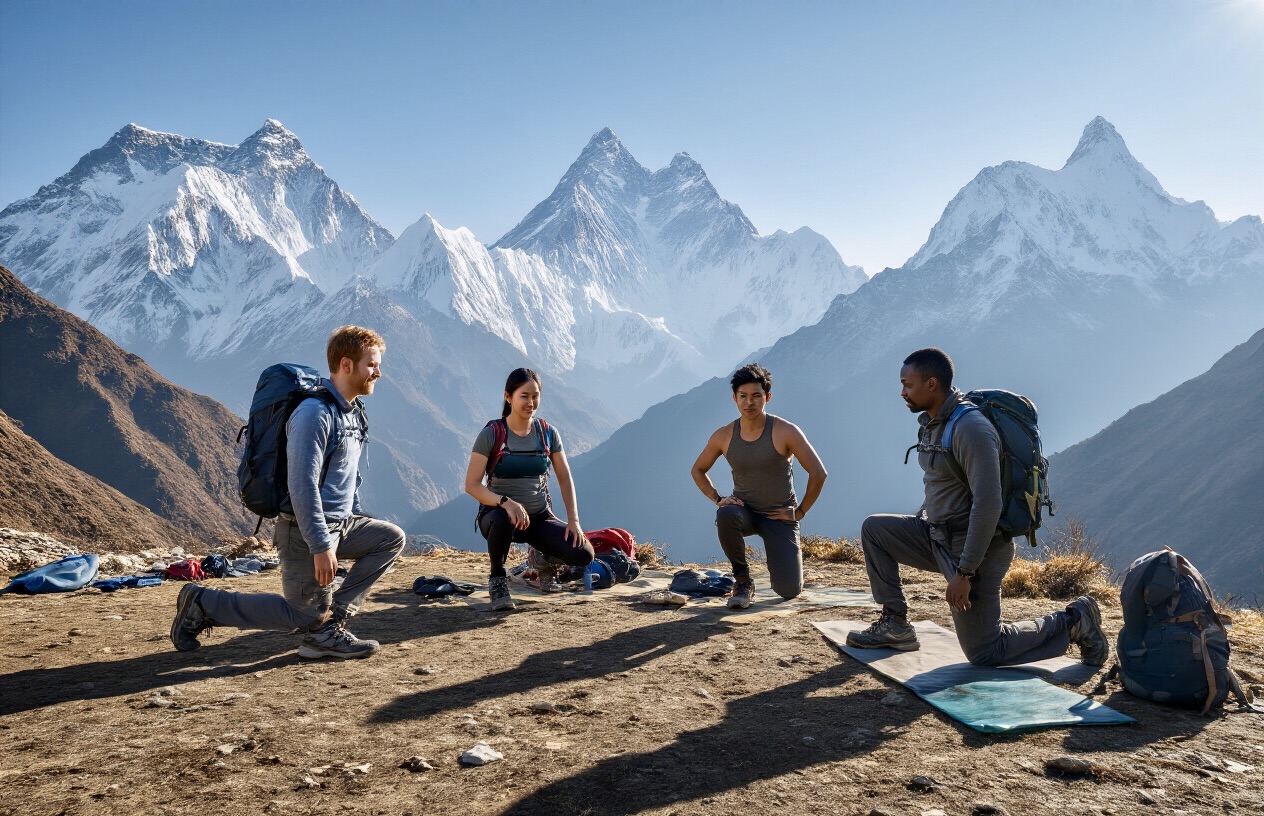
For Langtang and lower-altitude treks, a moderate fitness level may suffice, but we still recommend proper preparation. Remember that all treks involve carrying a backpack (around 6kg) while navigating uneven terrain, making leg strength particularly important.
Altitude acclimatization strategies
Acclimatization is perhaps the most critical aspect of high-altitude trekking in Nepal. We recommend:
- Planning for 2 nights of acclimatization below 3500m (at places like Namche Bazaar for Everest Region or Manang for Annapurna)
- Following the "climb high, sleep low" principle to help your body adapt
- Maintaining a slow, steady pace during ascent - this isn't a race!
- Staying well-hydrated with 4-5 liters of water daily
- Consulting your physician about Diamox before your trip, which can help prevent altitude sickness
- Considering arriving in Kathmandu (4,446 feet) a few days early to begin the acclimatization process
Proper acclimatization allows your body to produce more red blood cells, enhancing oxygen-carrying capacity at higher elevations.
Training recommendations before departure
We advise beginning your training program at least 2-3 months before your trek. Your training should include:
Aerobic/Cardio Training:
- Run 6-12 km three times weekly
- Include swimming, cycling, or using a StairMaster
- Focus on improving cardiovascular endurance for less-oxygen environments
Strength Training:
- Lower body: Squats, lunges, step aerobics, leg curls
- Upper body and core: Sit-ups, planks, shoulder press, back and shoulder exercises
- Build endurance for carrying a backpack uphill for hours
Elevation Training:
- Practice hiking uphill with a loaded backpack
- Train on stairs or hills if mountains aren't accessible
- Focus on maintaining a steady pace without overexertion
Gear Familiarization:
- Break in your hiking boots thoroughly before the trek
- Practice using trekking poles during training hikes
- Test all equipment you'll rely on during your journey
Medical considerations and health precautions
We emphasize several health precautions for a successful trek:
- Get a comprehensive medical check-up before your journey
- Discuss altitude medication (Diamox) with your physician, especially if you've never been at high elevations
- Maintain proper hydration before and during the trek
- Avoid alcohol and caffeine at high altitudes as they contribute to dehydration
- Pack water purification tablets or a filtering system
- Bring hand sanitizer to prevent illness on the trail
- Monitor for symptoms of altitude sickness: headache, nausea, loss of appetite, sleeplessness, and shortness of breath
- Ensure adequate rest and sleep during your trek
- Inform your guide immediately if you experience any health issues
- Prepare mentally for basic living conditions and cold weather challenges
Remember that mental preparation is equally important as physical readiness. Practice positive thinking and stress management techniques to help you overcome the inevitable challenges of high-altitude trekking.
Cultural and Scenic Highlights
Nepal offers an incredible mix of cultural richness and breathtaking landscapes that make each trekking region unique. In our years of guiding trekkers through these diverse regions, we've identified several key experiences that combine cultural immersion with scenic beauty.
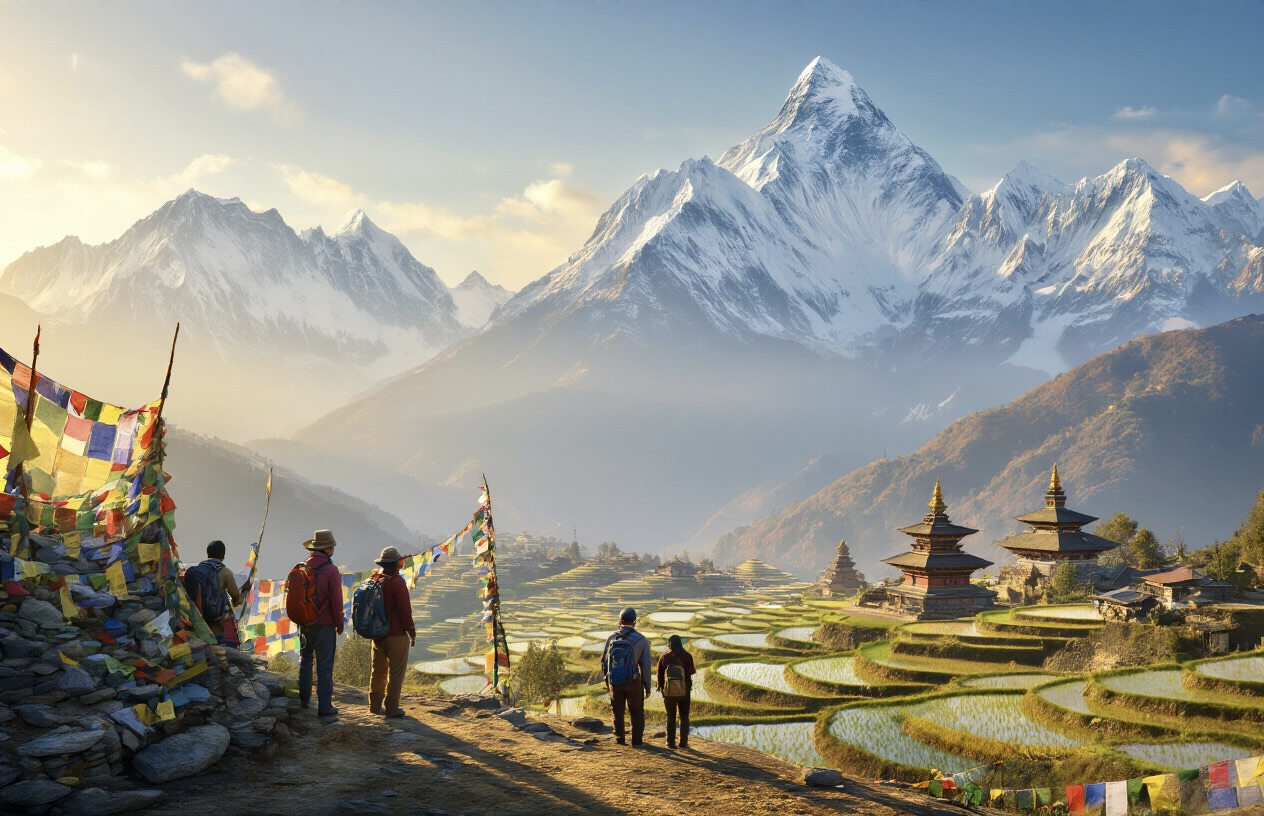
Mountain Photography Opportunities
Nepal's trekking regions provide exceptional photography opportunities with dramatic mountain vistas. When trekking in the Everest Region, you'll capture stunning views of the world's highest peak. In the Annapurna Region, the sunrise at Poon Hill offers photographers a panoramic spectacle of peaks, including Dhaulagiri and Machhapuchhre. The Langtang Region presents unique opportunities to photograph Ganesh Himal (7405m), Langtang Lirung (7245m), and Dorje Lhakpa (6990m) from various vantage points. For more secluded photography experiences, we recommend the Pikey Peak trek, known as a lower Everest trek, which offers impressive mountain panoramas with fewer crowds.
Traditional Village Homestay Experiences
For authentic cultural immersion, we arrange homestay experiences in traditional villages across Nepal's trekking regions. The Tamang Heritage Trek offers exceptional cultural encounters where you'll receive hearty welcome greetings from local Tamang people. In the Tsum Valley, which derives its name from the Tibetan word 'Tsombo', you'll experience unique Buddhist traditions through homestays. The Helambu trek also provides opportunities to stay with local families, learning about their daily lives and customs.
Wildlife and Biodiversity Encounters
Nepal's diverse geography supports remarkable biodiversity across its trekking regions. The Manaslu Region offers wildlife encounters within its varied ecosystems. Rolwaling trek rewards visitors with "tranquility, breathtaking peak views, affluent local cultures and varied plants and animals." During the Dhaulagiri Sanctuary trek, we often spot native species in their natural habitat. The Kori trek, located in the northeast of Pokhara valley in the Annapurna region, provides excellent opportunities for bird watching and experiencing Nepal's rich natural environment.
Through these cultural and scenic experiences, we help trekkers develop a deeper connection with Nepal's unique heritage and natural beauty.
Practical Planning Considerations
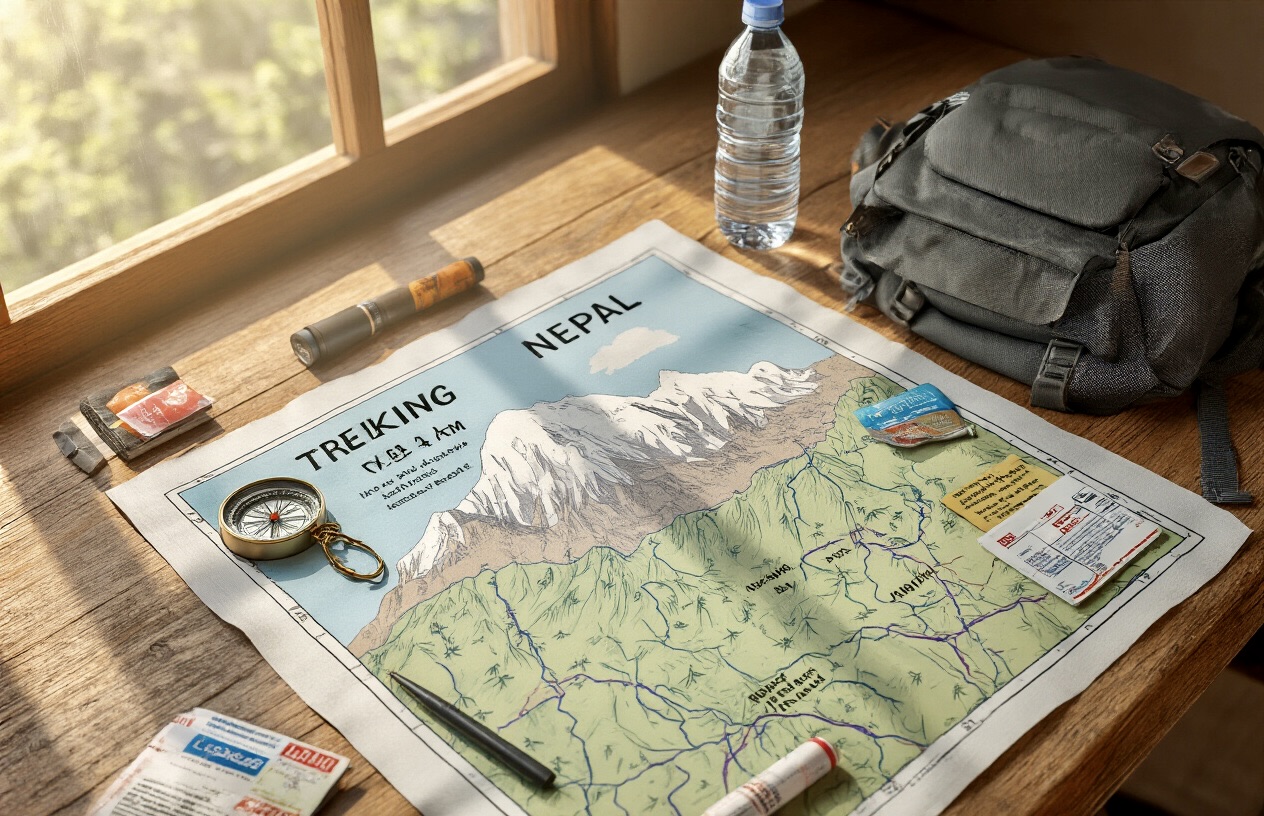
Permit requirements and costs for each region
When trekking in Nepal, obtaining the right permits is essential. Each region has specific requirements:
Everest Region:
- Trekkers Information Management System (TIMS) permit: $10 USD for guided groups, $20 USD for independent trekkers
- Sagarmatha National Park Entry Permit: $30 USD + 13% government tax
- Both permits require passport photos (usually 2)
Annapurna Region:
- ACAP (Annapurna Conservation Area Permit): Approximately $30 USD
- TIMS card is also required at similar rates to the Everest region
Langtang Region:
- Langtang National Park permit: $20-30 USD
- TIMS card is required
Manaslu Region:
- Special Restricted Area Permit (must trek with a guide)
- Manaslu Conservation Area Permit
- Costs are generally higher for restricted regions
We recommend obtaining permits in Kathmandu before starting your trek. For independent trekkers, visit the Nepal Tourism Board office near Thamel. If you're with a guided tour, they'll typically handle all permit arrangements for you.
Tea house vs camping accommodation options
Most trekkers in Nepal choose between tea houses or camping. Here's what to expect:
Tea House Trekking:
- Most popular option on major trekking routes
- Simple but comfortable private rooms
- Early parts of popular treks offer better amenities (in-room showers, western toilets, heated blankets)
- Higher elevations offer more basic accommodations (shared toilets, no showers)
- Costs range from $4-15 per night depending on the region and elevation
- No need to carry camping equipment
- Great opportunity to meet other trekkers
Camping Treks:
- Necessary in remote regions with limited tea houses
- Offers more flexibility with stopping points
- Requires porters or yaks to carry equipment
- More expensive due to additional staff and equipment
- Provides better isolation and privacy
- Generally involves a team of guides, cooks, and porters
As you get higher in elevation, remember that accommodations become more rustic with limited amenities. In places above 4,000m, expect no heat, no in-room outlets, and shared bathroom facilities.
Guide and porter hiring recommendations
We strongly recommend hiring local guides and porters for your Nepal trek:
Guides:
- Local knowledge enhances safety and cultural experience
- Essential for handling altitude sickness emergencies
- Typical rates: $25-35 USD per day for licensed guides
- Ensure your guide speaks good English and has proper certification
- Look for guides with first aid training and emergency evacuation knowledge
- Some guides specialize in specific regions
Porters:
- Can carry 20-30kg of gear
- Typical rates: $15-25 USD per day
- Standard practice is not to exceed 30kg per porter
- Consider hiring a porter-guide who can both carry gear and provide information
Hiring options:
- Through reputable trekking agencies in Kathmandu
- Through local recommendations in Nepal
- Online through established companies
When hiring, verify credentials, read reviews, and ensure fair treatment practices. Many quality guides have built relationships with local families, allowing for unique cultural experiences like home visits and interactions with local lamas.
Budget planning for different trekking styles
Your budget will vary dramatically based on your trekking style:
Independent Budget Trekking:
- $20-30 USD per day including accommodations and meals
- Additional costs for permits, transportation, and equipment
- Requires more time for logistics and planning
- Suitable for experienced trekkers with flexible schedules
Mid-Range Guided Trek:
- $50-80 USD per day
- Includes guide, sometimes a porter, basic accommodations
- May not include food costs beyond breakfast
- Limited extras and amenities
Luxury Guided Experience:
- $100-250+ USD per day
- All-inclusive package with guides, porters, all meals and drinks
- Better accommodations where available
- Some include helicopter returns (worth $500-1000)
- May include extras like photography services, equipment rental
- Often includes all tips, which is a significant cost savings
Additional budget considerations:
- Wi-Fi: Most lodges charge $3-5 per day if not included
- Charging electronics: $2-5 per device at higher elevations
- Hot showers: $3-7 when available
- Bottled water: $2-8 depending on elevation (bring a SteriPen or filtration system)
- Emergency evacuation insurance: Essential for all trekkers
We recommend building in a financial buffer for unexpected expenses and creating a detailed budget that accounts for every aspect of your journey. The most comprehensive guided experiences may seem expensive initially, but often provide better value when all costs are considered.
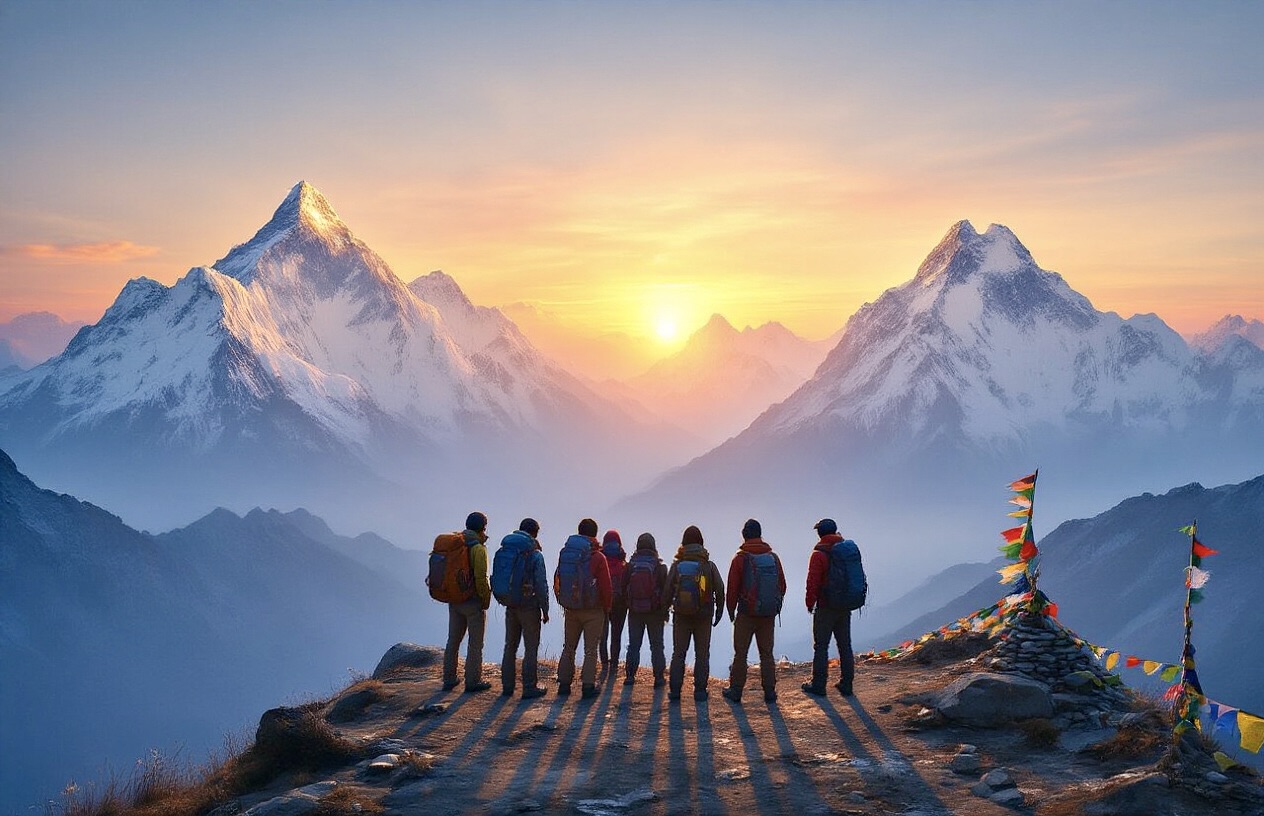
Your Nepal Trekking Adventure Awaits
Nepal's diverse trekking regions offer something for everyone, whether you're drawn to the towering peaks of Everest, the cultural richness of Annapurna, the accessibility of Langtang, or the untamed wilderness of Manaslu. By matching your experience level, considering seasonal factors, and preparing physically for your chosen route, you'll set yourself up for an unforgettable Himalayan adventure.
Remember that the perfect trek is one that aligns with your personal interests, fitness level, and travel timeline. Whichever region you choose, Nepal's breathtaking landscapes, warm hospitality, and profound cultural experiences will leave you with memories to last a lifetime. Start planning your journey today, and discover why trekkers from around the world return to Nepal's trails year after year.
If you need any further information, please contact us by email: at [email protected], Phone: +977 985 100 5129 (WhatsApp)




